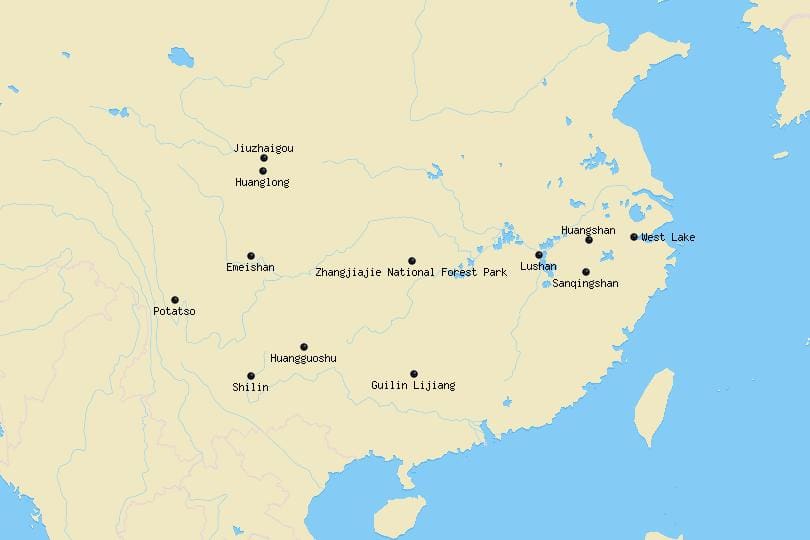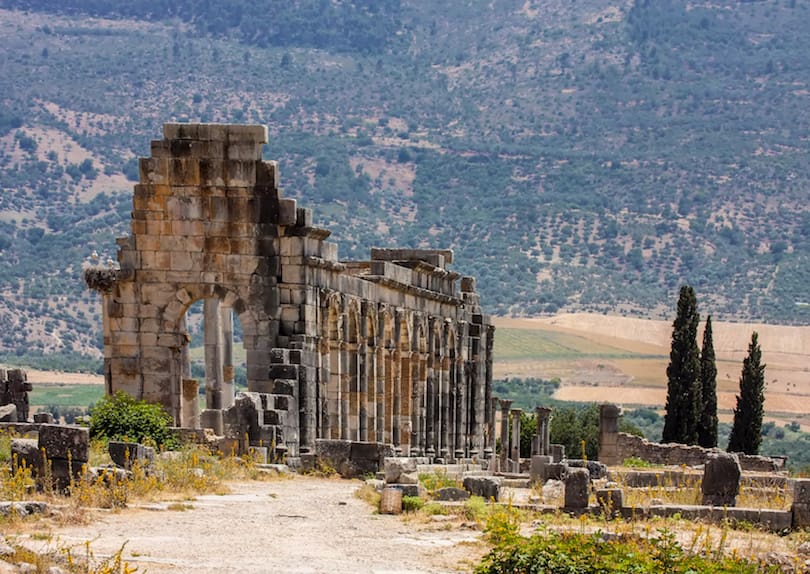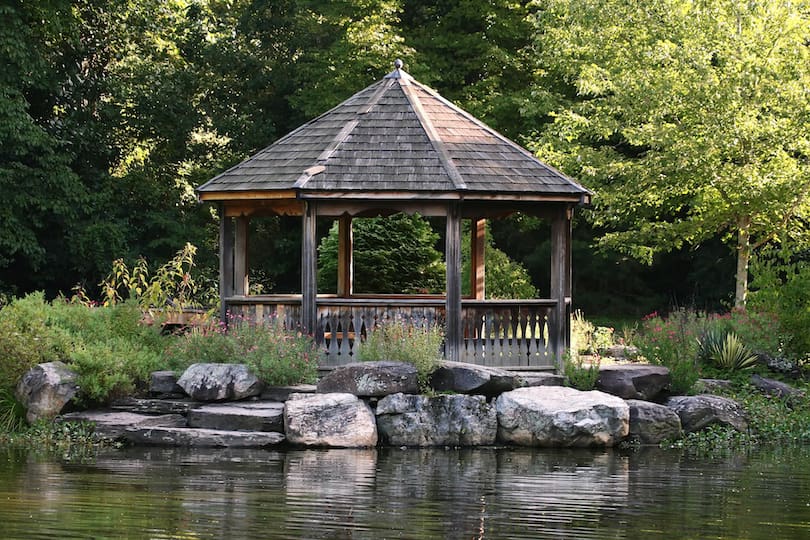Porto, the vibrant capital of northern Portugal, is a city brimming with charm, history, and culture. However, just beyond its colorful streets and iconic bridges lies a treasure trove of destinations perfect for day trips. From medieval towns to stunning beaches and lush wine regions, these 7 best day trips from Porto offer something for every traveler. Whether you’re seeking adventure, relaxation, or cultural immersion, these nearby gems are sure to captivate your heart.
1. Douro Valley: A Journey Through Portugal’s Premier Wine Region
Why Visit the Douro Valley?
The Douro Valley , a UNESCO World Heritage Site, is one of the world’s oldest demarcated wine regions. Famous for producing port wine and other exquisite varieties, this picturesque valley is dotted with terraced vineyards, quaint villages, and winding rivers. It’s an ideal destination for wine lovers, nature enthusiasts, and photographers alike. The Douro River, which carves its way through the valley, adds to the region’s allure, creating a serene and breathtaking landscape that feels like stepping into a painting.
Highlights of the Douro Valley
- Wine Tasting Tours: Visit renowned wineries (quintas) such as Quinta da Pacheca or Quinta do Bomfim for guided tours and tastings. Learn about the winemaking process while savoring some of the finest wines in the world. Many quintas also offer lunch or dinner options, pairing local dishes with their signature wines.
- Scenic Train Ride: Take the historic Linha do Douro train from Porto to Pinhão. This journey offers breathtaking views of the river and surrounding hills, making it one of the most scenic rail routes in Europe. The train winds through tunnels, over bridges, and alongside steep cliffs, providing endless photo opportunities.
- River Cruises: Hop on a traditional rabelo boat for a leisurely cruise along the Douro River. These flat-bottomed boats were once used to transport barrels of wine downriver to Porto. Today, they offer a relaxing way to admire the dramatic cliffs, cascading waterfalls, and charming riverside villages.
Activities for Visitors
- Hike through the vineyards and enjoy panoramic views of the valley. Trails range from easy walks to more challenging hikes, catering to all fitness levels.
- Explore the town of Pinhão, known for its beautiful azulejo-tiled train station. The intricate tilework depicts scenes of rural life and viticulture, offering a glimpse into the region’s heritage.
- Indulge in local delicacies like bacalhau (salted cod), cozido à portuguesa (meat stew), and fresh seafood, all paired with regional wines. Many restaurants in the area specialize in farm-to-table dining, using ingredients sourced directly from nearby farms.
Best Time to Visit
Spring (March to May) and autumn (September to November) are ideal for visiting the Douro Valley. The weather is pleasant, and the vineyards are either blooming or adorned with autumn colors. During harvest season (late August to October), visitors can participate in grape-picking activities and witness the winemaking process firsthand.
Travel Tips
- Book wine tours and river cruises in advance, especially during peak tourist seasons.
- Consider renting a car if you want flexibility to explore smaller villages and hidden gems.
- Wear comfortable shoes, as many wineries and trails involve walking.
2. Braga: A Spiritual and Historical Marvel
Why Choose Braga?
Known as the “Rome of Portugal,” Braga is steeped in religious heritage and architectural splendor. Located just 50 kilometers from Porto, this ancient city boasts centuries-old churches, baroque palaces, and lively festivals that reflect its deep-rooted traditions. With its rich history and vibrant atmosphere, Braga offers a fascinating contrast to the modernity of Porto.
Must-Visit Attractions in Braga
- Bom Jesus do Monte: This iconic hilltop sanctuary features a grand staircase adorned with fountains and statues representing the Stations of the Cross. Climb the steps—or take the funicular—for sweeping views of the city below. The church at the summit is a masterpiece of Baroque architecture.
- Braga Cathedral (Sé de Braga): One of Portugal’s oldest cathedrals, this Romanesque masterpiece showcases a mix of Gothic, Manueline, and Baroque styles. Inside, you’ll find ornate chapels, ancient tombs, and a museum housing sacred artifacts.
- Sameiro Sanctuary: Perched atop Mount Sameiro, this basilica offers stunning vistas and a peaceful atmosphere for reflection. Pilgrims often visit here to pray and seek blessings.
Things to Do
- Stroll through the historic center and admire the ornate facades of old buildings. Highlights include the Archbishop’s Palace and the Santa Bárbara Garden.
- Attend a mass or concert at one of the many churches. The acoustics in places like Bom Jesus do Monte make them perfect venues for choral performances.
- Sample local specialties like frigideiras (savory pastries filled with meat or vegetables) and vinho verde (young green wine). Many cafes and bakeries sell these treats, allowing you to taste authentic flavors.
Travel Tips
- Wear comfortable shoes, as much of the city involves walking uphill, particularly around Bom Jesus do Monte.
- Plan your visit around Easter Week if you want to experience the famous Holy Week processions, which attract thousands of pilgrims and tourists.
- Visit early in the morning or late afternoon to avoid crowds at popular sites.
3. Guimarães: The Cradle of Portugal
What Makes Guimarães Special?
Often referred to as the birthplace of Portugal, Guimarães played a pivotal role in the country’s formation. Its well-preserved medieval architecture and rich history earned it a spot on the UNESCO World Heritage List. As the hometown of Afonso Henriques, Portugal’s first king, Guimarães is steeped in national pride and cultural significance.
Key Highlights
- Guimarães Castle: This imposing fortress dates back to the 10th century and served as the residence of Afonso Henriques, Portugal’s first king. Inside, you’ll find exhibits detailing the castle’s role in Portuguese history.
- Palace of the Dukes of Braganza: Step inside this majestic palace to explore its opulent interiors and museum exhibits showcasing royal artifacts. The palace’s Gothic architecture and period furnishings provide a glimpse into medieval life.
- Largo da Oliveira Square: Wander through this charming square surrounded by historic buildings, including the Church of Our Lady of Oliveira. The square is a hub of activity, with outdoor cafes and street performers adding to its lively vibe.
Activities for Travelers
- Walk along the cobbled streets of the historic quarter and soak in the medieval ambiance. Look out for artisan shops selling handmade goods like pottery and embroidery.
- Visit the Alberto Sampaio Museum to see sacred art and textiles from the Middle Ages. The museum houses an impressive collection of liturgical vestments, sculptures, and paintings.
- Enjoy a meal at a traditional restaurant serving cozido à portuguesa (meat stew) or roasted kid goat, both local specialties.
Best Time to Visit
Year-round, but summer evenings are particularly magical when outdoor cafes come alive with music and laughter. Spring and fall offer milder temperatures, making them ideal for exploring the city on foot.
Travel Tips
- Combine your visit with a stop at Penha Mountain, located just outside Guimarães. The mountain offers hiking trails, picnic areas, and a cable car ride with panoramic views.
- Bring cash, as some smaller establishments may not accept credit cards.
4. Aveiro: The Venice of Portugal
Why Visit Aveiro?
Nicknamed the “Venice of Portugal,” Aveiro enchants visitors with its network of canals, colorful moliceiro boats, and Art Nouveau architecture. This coastal city combines maritime charm with modern vibrancy, making it a delightful day trip from Porto. Whether you’re interested in history, nature, or gastronomy, Aveiro has something for everyone.
Top Attractions in Aveiro
- Ria de Aveiro Lagoon: Cruise through the lagoon aboard a moliceiro boat, learning about the area’s salt production and fishing traditions. These brightly painted vessels are unique to Aveiro and add a touch of whimsy to your journey.
- Costa Nova Beach: Just a short drive away, this beach is famous for its striped fishermen’s houses and golden sands. It’s a great spot for sunbathing, swimming, or simply enjoying the sea breeze.
- Art Nouveau District: Admire the intricate facades of buildings like the former Mercado Negro (Black Market). Many structures feature floral motifs, geometric patterns, and stained glass windows, reflecting the elegance of the Art Nouveau movement.
Things to Do
- Try ovos moles, a traditional sweet made from egg yolks and sugar, shaped like shells or fish. These delicate treats are sold in wooden boxes resembling clams or barrels.
- Rent a bike and cycle along the Ecopista do Vouga, a scenic trail running through forests and wetlands. The route connects Aveiro to neighboring towns, offering plenty of opportunities for birdwatching and photography.
- Shop for handmade ceramics inspired by Aveiro’s maritime motifs. Local artisans create everything from decorative tiles to functional tableware.
Travel Tips
- Visit during low tide to fully appreciate the lagoon’s ecosystem and observe wading birds feeding in shallow waters.
- Bring sunscreen and swimwear if you plan to relax at Costa Nova Beach. Lifeguards are present during peak hours, ensuring safety for swimmers.
- Take a guided walking tour to learn about Aveiro’s history and architecture from knowledgeable locals.
5. Amarante: A Picturesque Riverside Town
Discovering Amarante
Nestled along the banks of the Tâmega River, Amarante exudes tranquility and charm. Known for its stone bridge, monasteries, and culinary delights, this small town is a delightful escape from the hustle and bustle of city life. Its picturesque setting makes it a favorite among painters and writers seeking inspiration.
Notable Landmarks
- São Gonçalo Bridge: Spanning the Tâmega River, this historic bridge connects the two halves of Amarante and leads to the São Gonçalo Monastery. Legend has it that the bridge miraculously survived destruction during battles in the 16th century.
- São Gonçalo Monastery: Dedicated to the patron saint of Amarante, this monastery houses beautiful frescoes and relics. The church’s interior is adorned with gilded altarpieces and intricate woodcarvings.
- Museu Amadeo de Souza-Cardoso: Art lovers will appreciate this museum showcasing works by the renowned Portuguese painter Amadeo de Souza-Cardoso. His bold use of color and innovative techniques influenced European modernism.
Activities for Visitors
- Relax by the riverside and watch swans glide across the water. The Tâmega River is a popular spot for kayaking and paddleboarding.
- Savor local dishes like tripas à moda do Porto (tripe stew) and bolo rei (king cake). Many restaurants in Amarante specialize in hearty, home-cooked meals.
- Browse artisan shops selling handcrafted jewelry and pottery. Amarante is known for its filigree work, a delicate form of metal crafting passed down through generations.
Best Time to Visit
Late spring and early autumn, when the weather is mild and the countryside is lush. Summer weekends can be busy, so consider visiting on weekdays for a quieter experience.
Travel Tips
- Combine your visit with a hike in the nearby Serra do Marão mountains. The rugged terrain and panoramic views make it a paradise for outdoor enthusiasts.
- Don’t miss the annual São Gonçalo Festival, held in June. The celebration includes parades, fireworks, and traditional music performances.
6. Matosinhos: A Coastal Retreat Near Porto
Why Choose Matosinhos?
Located just north of Porto, Matosinhos is a coastal haven offering pristine beaches, fresh seafood, and a laid-back vibe. It’s perfect for those looking to unwind after exploring the city. Whether you’re a surfer, foodie, or beach bum, Matosinhos has something to offer.
Highlights of Matosinhos
- Matosinhos Beach: Stretch out on the soft sand or take a dip in the Atlantic Ocean. Surfing lessons are available for beginners, and experienced surfers will find consistent waves year-round.
- Mercado Municipal de Matosinhos: This bustling market sells freshly caught fish, fruits, vegetables, and flowers. Don’t miss the grilled sardines prepared on-site! The aroma alone is enough to entice even the pickiest eaters.
- Leça Swimming Pools: Designed by famed architect Álvaro Siza Vieira, these tidal pools blend seamlessly with the natural landscape. They provide a safe and refreshing place to swim, even during high tide.
Things to Do
- Cycle along the coastal promenade connecting Matosinhos to Foz do Douro. Along the way, you’ll pass parks, playgrounds, and waterfront cafes.
- Dine at Michelin-starred restaurants like Pedro Lemos or casual eateries serving petiscos (Portuguese tapas). Seafood lovers should try arroz de marisco (seafood rice) or caldeirada (fish stew).
- Watch the sunset over the ocean with a glass of chilled vinho verde. The combination of salty air and citrusy wine creates an unforgettable sensory experience.
Travel Tips
- Arrive early to secure parking near the beach, especially during weekends and holidays.
- Check tide schedules if planning to use the tidal pools, as they fill up during high tide.
- Bring layers, as coastal breezes can make evenings cooler than expected.
7. Viana do Castelo: Where Mountains Meet the Sea
Exploring Viana do Castelo
Perched between the Minho River and the Santa Luzia Hill, Viana do Castelo blends maritime heritage with mountainous beauty. Its unique location makes it a gateway to both coastal adventures and inland explorations. Whether you’re interested in history, nature, or cuisine, Viana do Castelo has something for everyone.
Star Attractions
- Santa Luzia Basilica: Ascend the hill via funicular or hike up for jaw-dropping views of the town and coastline. The basilica itself is a Neo-Byzantine marvel, featuring a domed roof and intricate mosaics.
- Gil Eannes Ship: Docked in the harbor, this hospital ship-turned-museum tells the story of Portugal’s seafaring past. Exhibits include medical equipment, crew quarters, and navigation tools used during long voyages.
- Praca da Republica: The main square is lined with cafes and historic buildings, including the Misericordia Church. Street musicians often perform here, adding to the lively atmosphere.
Activities for Nature Lovers
- Kayak along the Lima River or paddleboard in the bay. The calm waters are ideal for beginners, while stronger currents near the mouth of the river challenge experienced paddlers.
- Hike the Caminho dos Romeiros pilgrimage route leading to Santa Luzia. The trail passes through forests, farmland, and rocky outcrops, offering diverse scenery and solitude.
- Shop for traditional embroidery and filigree jewelry at local markets. Viana do Castelo is renowned for its goldsmithing skills, particularly in creating intricate designs inspired by Moorish art.
Best Time to Visit
Summer for beach activities; spring or fall for hiking and milder temperatures. Winter brings occasional rain showers, but the mist-covered hills create a mystical ambiance.
Travel Tips
- Rent a car if you plan to explore the surrounding countryside, including Peneda-Gerês National Park.
- Visit during the Romaria d’Agonia festival in August, a vibrant celebration honoring the patron saint of fishermen. Expect parades, folk dances, and elaborate costumes.
Travel Tips for Day Trips from Porto
- Transportation Options: Renting a car gives you flexibility, but trains and buses connect Porto to most destinations efficiently.
- Packing Essentials: Comfortable walking shoes, sunscreen, and a reusable water bottle are must-haves.
- Booking Ahead: Reserve tickets for popular attractions like wine tours and cruises to avoid last-minute hassles.
- Local Etiquette: Tipping is appreciated but not mandatory in Portugal. Round up bills at cafes and leave 10% at restaurants.
Conclusion
Porto may be a captivating city, but its surroundings hold equally enchanting treasures waiting to be discovered. By embarking on these 7 best day trips from Porto , you’ll uncover the diverse landscapes, rich history, and warm hospitality that define northern Portugal. Whether you’re sipping port wine in the Douro Valley, wandering through medieval streets in Guimarães, or lounging on the beaches of Matosinhos, each destination promises memories to cherish forever.
Frequently Asked Questions (FAQs)
- How far is the Douro Valley from Porto?
- Approximately 100 kilometers, about a 1.5-hour drive.
- Can I visit multiple places in one day?
- While possible, it’s recommended to focus on one or two destinations to fully enjoy the experience.
- Are there guided tours available for these day trips?
- Yes, numerous operators offer guided tours, including transportation and activities.
- What is the easiest way to reach these destinations?
- Trains and buses are convenient for nearby towns, while renting a car provides more freedom.
- Do I need to book accommodations in advance?
- For day trips, no overnight stays are required, but dining reservations are advisable during peak seasons.
- Is public transport reliable in rural areas?
- Public transport is generally reliable, though less frequent in smaller towns.
- Are these destinations kid-friendly?
- Absolutely! Many sites cater to families, offering activities like boat rides and interactive museums.
- What should I wear for hiking or outdoor activities?
- Opt for lightweight clothing, sturdy shoes, and layers for changing weather conditions.
- Are credit cards widely accepted outside Porto?
- Most establishments accept cards, but carrying cash is useful for smaller vendors.
- Can I combine wine tasting with other activities?
- Yes, many tours include stops at wineries alongside sightseeing or dining experiences.



